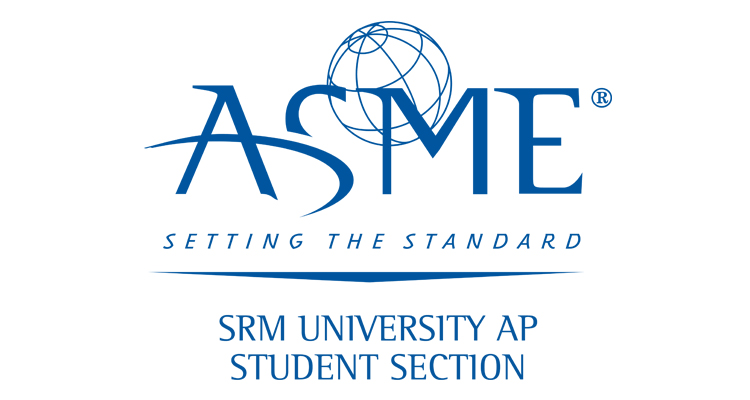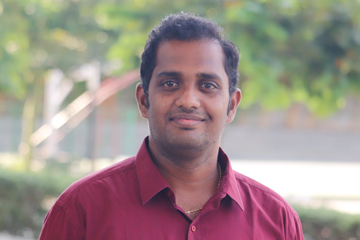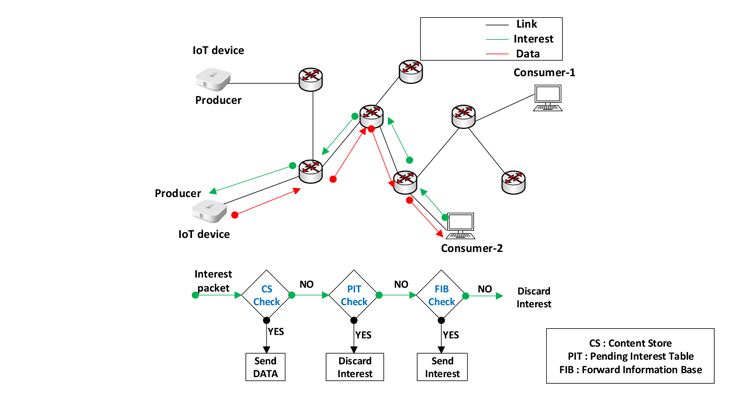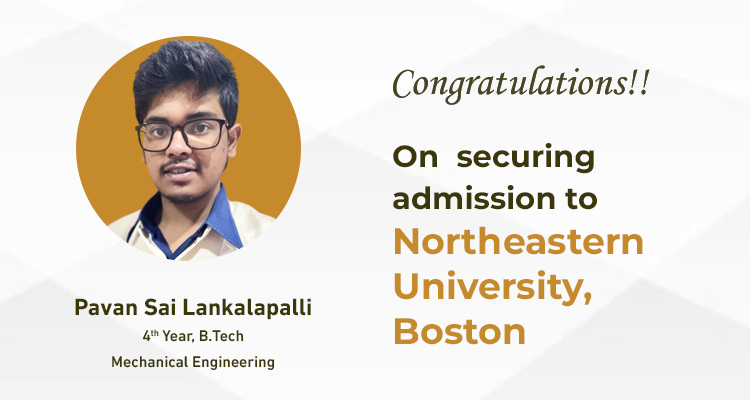SRM University-AP collaborates with the American Society of Mechanical Engineers (ASME)
 The Department of Mechanical Engineering, SRM University-AP, Andhra Pradesh, introduces the globally recognised American Society of Mechanical Engineers (ASME) membership programmes to its students.
The Department of Mechanical Engineering, SRM University-AP, Andhra Pradesh, introduces the globally recognised American Society of Mechanical Engineers (ASME) membership programmes to its students.
The American Society of Mechanical Engineers (ASME) is a non-profit establishment formed for the global engineers’ community that promotes collaboration, knowledge sharing, career enhancement, and skill development. ASME Student Chapter helps university engineering students develop their professional identity and provides essential engagement opportunities by offering access to a wide range of activities and resources such as membership, competitions, scholarships, student sections and much more.
The engineering curriculum is not restricted to the theoretical aspects but involves practical applications. The collaboration with ASME will help students of our university to find engineering-related job articles, online journals, webinars, and workshops on a single platform. Students will be exposed to niche career paths and opportunities across industries where they can apply their mechanical engineering education to address critical issues facing the globe. Students can get in touch with experienced professionals all around the world through the ASME mentoring programme and seek careers or any other type of guidance.
SRM University-AP collaborates with global organisations to promote international exposure of students. In collaboration with ASME, the Department of Mechanical Engineering will be organising webinars and workshops by eminent faculties of the institute, where they will share their experiences and knowledge with the participants. The programme aims to create extraordinary learning experiences for the students to carry out many activities under this umbrella and fulfil the expectations of ASME.
Dr Prakash Jadav, Associate Professor in the Department of Mechanical Engineering, will be acting as faculty adviser for this chapter which is headed by Tushar Sahu.
- Published in Collaborations, Departmental News, Mechanical Engineering NEWS, News
Redefining information-centric IoT networks in the internet architecture
 Dr Satish Anamalamudi, Assistant Professor, in the Department of Computer Science and Engineering has published a research paper titled “Cooperative Caching Scheme for Machine-to-Machine Information-Centric IoT Networks” in the IEEE Canadian Journal of Electrical and Computer Engineering. The research paper is co-authored by Dr Mohammed Saeed Alkatheiri and Dr Eesa Al Solami of University of Jeddah, Saudi Arabia and Dr Abdur Rashid Sangi of Yibin University, China.
Dr Satish Anamalamudi, Assistant Professor, in the Department of Computer Science and Engineering has published a research paper titled “Cooperative Caching Scheme for Machine-to-Machine Information-Centric IoT Networks” in the IEEE Canadian Journal of Electrical and Computer Engineering. The research paper is co-authored by Dr Mohammed Saeed Alkatheiri and Dr Eesa Al Solami of University of Jeddah, Saudi Arabia and Dr Abdur Rashid Sangi of Yibin University, China.
According to the authors, Information-centric networks (ICNs), a foreseen future Internet architecture, focuses on the application content rather than its hosting location. With this, the existing Internet protocol (IP)-based host-centric communication model can be transformed into a content-centric communication model with the support of in-network caching, name-based routing, and location-independent content domain names. Recently, ICN is proposed to be a potential Internet architecture for Internet-of-Things (IoT) networks due to minimal retrieval delays and reduced load on the data producer. Content retrieval from IoT nodes plays a prominent role in enhancing the performance of the ICN-IoT networks. The in-network caching of ICN enhances the data availability in the network, overcome the issue of single-point failure, and improve IoT devices power efficiency. In this work, the authors explore a cooperative caching scheme for information-centric-IoT networks to optimize the cache hit with the support of a caching network topology model, a content popularity model, and an exogenous request access model.
 Dr Satish says that ICN proposes to shift the existing complex Internet model to a simple and generic one. This approach considers the content as the first-class network citizen. In ICN, contents are addressed and routed by their unique names and are decoupled from the address of the node storing it. In this way, consumers ask for information by its name rather than its locality address. In ICN, every content is identified by using a unique, persistent and location-independent name. A wide set of IoT applications is inherently information-centric. In fact, the majority of IoT applications target data regardless of its source. For instance, environmental monitoring applications are oblivious to the information origin. ICN is a promising candidate for IoT environments. It can natively support IoT scenarios while improving data dissemination and reducing network complexity.
Dr Satish says that ICN proposes to shift the existing complex Internet model to a simple and generic one. This approach considers the content as the first-class network citizen. In ICN, contents are addressed and routed by their unique names and are decoupled from the address of the node storing it. In this way, consumers ask for information by its name rather than its locality address. In ICN, every content is identified by using a unique, persistent and location-independent name. A wide set of IoT applications is inherently information-centric. In fact, the majority of IoT applications target data regardless of its source. For instance, environmental monitoring applications are oblivious to the information origin. ICN is a promising candidate for IoT environments. It can natively support IoT scenarios while improving data dissemination and reducing network complexity.
Dr Satish Anamalamudi had been a Research Engineer with Huawei Technologies, Beijing, China. He also worked with the Huaiyin Institute of Technology (HYIT), Huai’an, China, until February 2018. He is currently an Assistant Professor with the Department of Computer Science and Engineering, SRM University-AP, Andhra Pradesh. His research interests include the common-control-channel design for MAC and routing protocols in cognitive radio ad hoc networks, MAC, and routing protocol design of Internet of Things (IoT) and 5G networks.
Read the full paper here: https://doi.org/10.1109/ICJECE.2020.3046844
- Published in CSE NEWS, News, Research News
Distribution of essential food commodities among the underprivileged
 A food distribution drive among the villagers was held on Sunday June 06, 2021, at SRM University-AP, Andhra Pradesh. The distribution of goods was carried out with the support of SRM Trust. Prof V S Rao, University Vice-Chancellor, and Dr B Sivakumar, Deputy Dean-Academic Affairs handed over several commodities like rice, condiments, sugar, and wheat flour to the people in need. In his remarks on the occasion, Vice-Chancellor Prof VS Rao stated that the programme was established with the good intention of assisting the underprivileged during the trying times of Corona. We will continue to carry out similar community service programmes in future. Later, the beneficiaries thanked SRM University President Dr P Satyanarayanan, Vice-chancellor V S Rao and Puthaiya Thalaimurai CEO Venkatagiri. The event was attended by University Campus Life Maintenence Director Venkatachalam S, Maintenance Manager Maria Leon, and Manager Chandra Prabhu.
A food distribution drive among the villagers was held on Sunday June 06, 2021, at SRM University-AP, Andhra Pradesh. The distribution of goods was carried out with the support of SRM Trust. Prof V S Rao, University Vice-Chancellor, and Dr B Sivakumar, Deputy Dean-Academic Affairs handed over several commodities like rice, condiments, sugar, and wheat flour to the people in need. In his remarks on the occasion, Vice-Chancellor Prof VS Rao stated that the programme was established with the good intention of assisting the underprivileged during the trying times of Corona. We will continue to carry out similar community service programmes in future. Later, the beneficiaries thanked SRM University President Dr P Satyanarayanan, Vice-chancellor V S Rao and Puthaiya Thalaimurai CEO Venkatagiri. The event was attended by University Campus Life Maintenence Director Venkatachalam S, Maintenance Manager Maria Leon, and Manager Chandra Prabhu.
- Published in News
Mechanical Engineering graduate admitted into Northeastern University, Boston
 Lankalapalli Pavan Sai from the undergraduate department of Mechanical Engineering at SRM University-AP, Andhra Pradesh, has secured an astounding admission to Northeastern University (NEU), Boston for his higher education. The Master’s in Engineering Management programme that he has enrolled in meets F-1 international student status requirements and is purely designed for the Core background (i.e. Mechanical, Electrical, and Civil Engineering) students. Pavan Sai had also qualified to work with the global L&T Technology Services company through the campus placement at SRM University-AP.
Lankalapalli Pavan Sai from the undergraduate department of Mechanical Engineering at SRM University-AP, Andhra Pradesh, has secured an astounding admission to Northeastern University (NEU), Boston for his higher education. The Master’s in Engineering Management programme that he has enrolled in meets F-1 international student status requirements and is purely designed for the Core background (i.e. Mechanical, Electrical, and Civil Engineering) students. Pavan Sai had also qualified to work with the global L&T Technology Services company through the campus placement at SRM University-AP.
According to Pavan Sai, NEU lies in the heart of Boston city which is one of the major hubs for startups and the University is known for its CO-OP program that gives hands-on experience in theoretical, quantitative, and analytical skills and tools. His decision to study abroad happened rather late though he qualified IELTS on time and has been preparing for GRE.
When he applied to NEU just two days before the deadline, the faculty and staff at SRM University-AP extended their full assistance to go by the application. “I cannot forget the assiduous support and mentorship of my Professors Dr Satya Pramod Jammy and Dr Venkata Nori from the Department of Mechanical Engineering”, says Pavan Sai. “I also want to thank SRM University-AP for helping me and providing me with opportunities”, he adds.
- Published in Mechanical Engineering NEWS, News, Students Achievements




